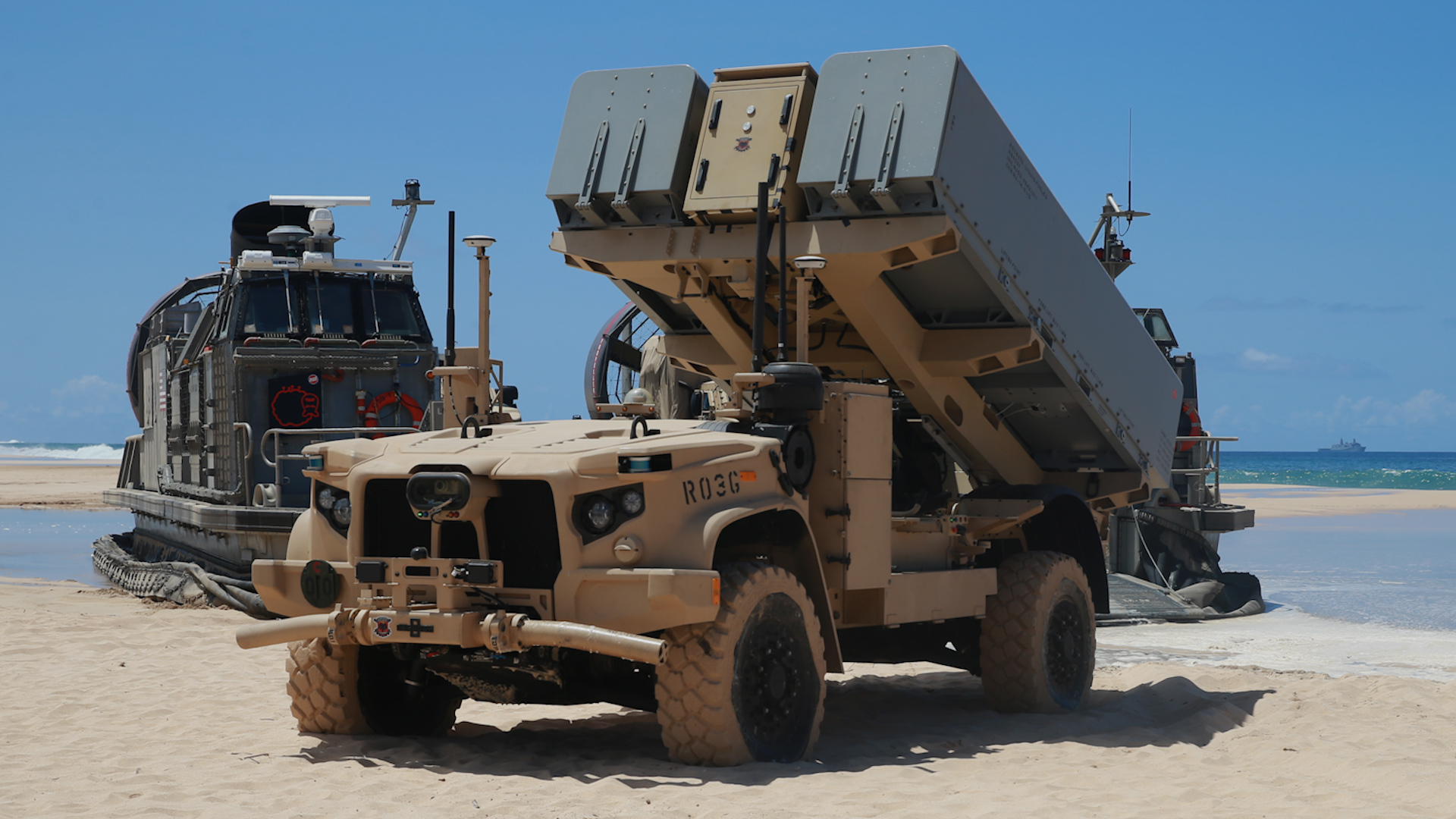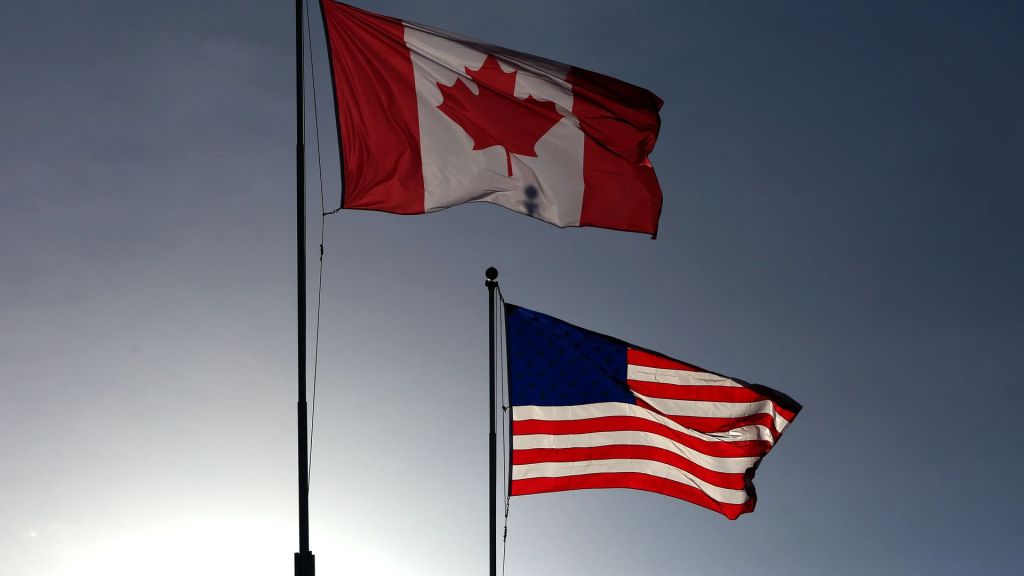
[RYAN]
WE’VE TALKED A LOT ABOUT THE EXPLOSIVE GROWTH OF AUTONOMOUS VEHICLES IN THE MILITARY, IT’S A TREND THAT SHOWS NO SIGN OF SLOWING. ONE OF THE LATEST EXAMPLES COMES FROM THE MARINES CORPS SYSTEMS COMMAND AND THEIR RECENT AWARDING OF A NEARLY $30 MILLION CONTRACT TO OSHKOSH DEFENSE FOR THE ROGUE-FIRES, THAT’S WHY IT’S OUR WEAPON OF THE WEEK.
MEET THE REMOTELY OPERATED GROUND UNIT FOR EXPEDITIONARY FIRES, AKA THE ROGUE-FIRES. BUILT BY OSHKOSH DEFENSE, IT’S NEXT-GEN AUTONOMOUS TECHNOLOGY THE MARINES ARE INVESTING IN TO SEIZE AND DEFEND KEY MARITIME TERRAIN IN POTENTIAL FUTURE CONFLICTS.
BASED ON OSHKOSH’S JOINT LIGHT TACTICAL VEHICLE, THEY SAY IT’S EXTREMELY RUGGED AND MOBILE, WITH THE ABILITY TO CARRY UP TO A 6,000 POUND PAYLOAD AUTONOMOUSLY.
[Janet Keech, Senior Dir. of Prog. Management, Oshkosh Defense]
“You can see, looking at the vehicle, that there’s no cab, there’s no place for a driver to sit. So this vehicle is controlled in a variety of ways that take the marine or the soldier out of the picture, so that they’re protected. There’s less there’s less need for a lot of manpower. Manpower is a critical resource these days, so it gives a lot of flexibility to the services and how they use it.”
[RYAN]
JANE KEETCH, A SENIOR DIRECTOR OF PROGRAM MANAGEMENT FOR OSHKOSH, TELLS US THERE ARE MULTIPLE WAYS FOR TROOPS IN THE FIELD TO PUT THE ROGUE-FIRES TO WORK.
[Janet Keech, Senior Dir. of Prog. Management, Oshkosh Defense]
“The first one is a leader follower method, where you have one leader vehicle and you can have multiple follower vehicles behind it, following along in a convoy type of situation, or you can do it using like a video handheld controller that you can do from about a kilometer away, depending on line of sight and the terrain. And honestly, it’s a much easier way for our young Marines and soldiers, most of them are used to playing video games, and our customers even told us that in some cases, it’s easier to teach them to use a video controller than it is to teach them to drive a truck. So it’s definitely technology that they’re very familiar with,
[RYAN]
ITS TECHNOLOGY BUILT TO LESSEN THE RELIANCE ON HUMAN DRIVERS IN HIGH-RISK SITUATIONS, MAKING IT EASIER FOR MARINES TO ACHIEVE BATTLEFIELD EFFECTIVENESS, SPECIFICALLY IN THE U.S. INDO-PACIFIC COMMAND.
DESIGNED WITH FUNCTIONALITY IN MIND, KEECH SAYS IT CAN BE USED AS A WEAPONS PLATFORM AS WELL AS PLAY A ROLE IN ANY UNIT’S LOGISTICS PLANS.
[Janet Keech, Senior Dir. of Prog. Management, Oshkosh Defense]
“It’s very versatile to be used for multiple different types of weapons platforms as well as you can take the weapons platform off and use it as a logistics resupply, autonomous resupply vehicle. So the Marine Corps has intentions of using it for both short-range all the way to long range fire weapons platforms. And this is the Naval Strike missile that’s on it now. So it’s it’s the first one out of the gate for the Marine Corps. In terms of safety, if you’re firing a weapon system off a vehicle, you don’t want your people right there with it when that signature is there. So it keeps them away from the platform while it’s being fired, and then it lets them rapidly redeploy it back to safety.”
[RYAN]
OF COURSE, THIS WEAPONS OF THE WEEK, AND THE ROUGE FIRES, DELIVERS ON THAT FRONT IN A BIG WAY.
[Janet Keech, Senior Dir. of Prog. Management, Oshkosh Defense]
“The Marine Corps is also planning on using it for long range fires, that includes the Tomahawk missile, and then there’s shorter range HIMARS, types of applications for that as well. But then you can take this across to the army and use it for really the rogue platform itself. You can integrate it with anything that’s capable the payload is capable of holding, carrying.”
[RYAN]
WHILE IT DEFINITELY HAS LOTS OF BRAWN, IT BRINGS THE BRAINS AS WELL. OSHKOSH HAS PARTNERED WITH FORTERRA TO PUT THEIR AUTODRIVE SYSTEM BEHIND THE WHEEL.
A RELEASE FROM OSHKOSH TOUTING THE DEAL SAYS DELIVERIES WILL START SOMETIME THIS YEAR.











